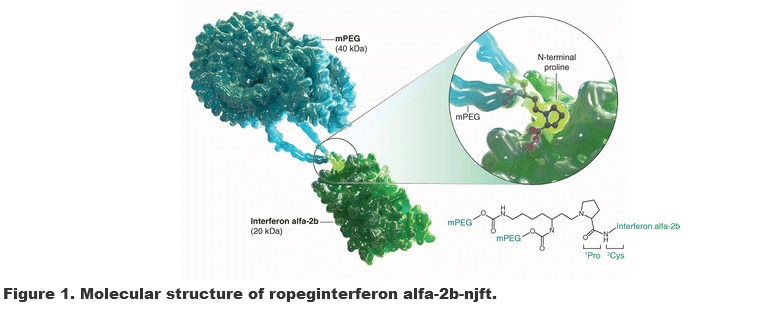I found this report that has a particularly clear concept illustration of IFN and pegylation.
futuremedicine.com/doi/10.2...
Nothing actionable here, but just for info for the curious types.
--
This image shows Besremi. The actual IFN is the green part. This is essentially what the earliest interferons were, bare IFN. This IFN enters our cells right away and gets cleared too fast.
To slow this down, the blue part is the pegylation. This provides the time release that makes modern IFN more tolerable. As I understand it, the Peg keeps the IFN in the body for longer and the liver etc can't clean it out so quickly. The part in the circle is where the Peg and IFN are attached.
Besremi is different from Pegasys at this circled area. Bes has this single attachment point, PEG has several and they vary. This difference is what Besremi claims as their improvement, the attachment is always the same and gives more consistent effects.
"The PEG moiety lowers the clearance of interferon alpha, thereby extending the duration of its therapeutic effects"
cancer.gov/publications/dic...
I can't find a clear explanation how PEG does this, I think the experts have not fully figured it out.
--
On a separate note, a recent short 1 year Besremi study in Japan had high doses:
"At the end of study treatment, 14 (of 29) patients were receiving the maximum 500-μg dose of ropeginterferon alfa-2b."
So about half had 500mcg. This is way higher than we see on the forum as discussed in another thread.
